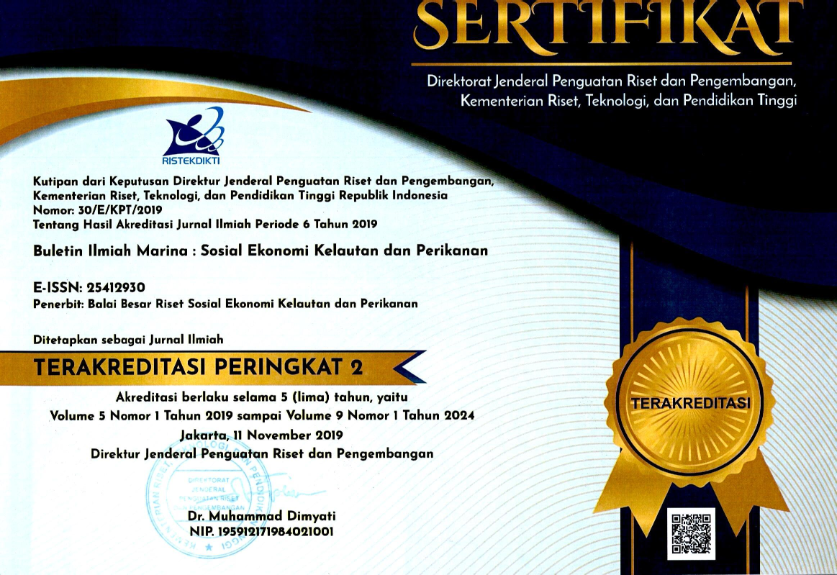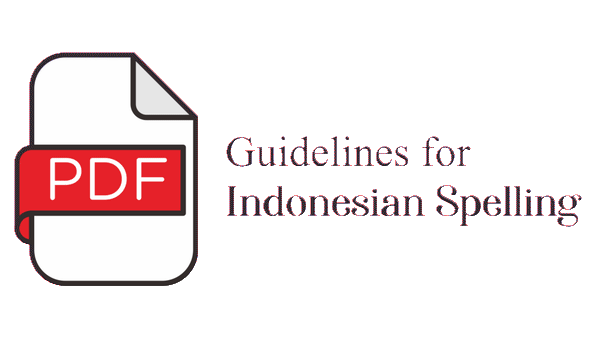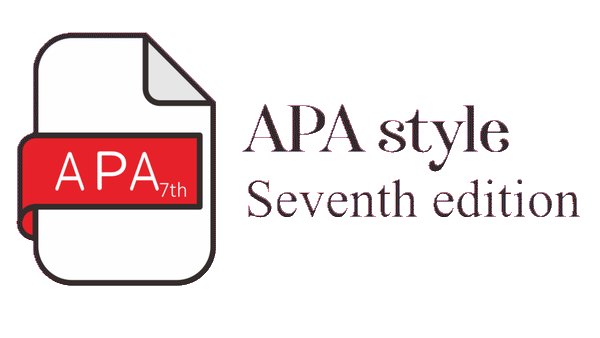Mekanisme dan Kunci Keberhasilan Pengelolaan Kolaborasi Ekowisata Bahari di Kawasan Konservasi Raja Ampat
Abstract
Tantangan pengembangan pariwisata di kawasan konservasi muncul ketika kepentingan pembangunan ekonomi tidak selaras dengan pembangunan ekologi. Raja Ampat memiliki keanekaragaman hayati yang perlu dilindungi. Di sisi lain, keanekaragaman hayati tersebut menjadi potensi wisata yang dimanfaatkan untuk kepentingan ekonomi. Pemerintah Kabupaten Raja Ampat menetapkan Kawasan Perairan Raja Ampat sebagai zona semiintensif, yakni kawasan yang dirancang untuk menerima kunjungan wisatawan dalam skala kecil dengan aktivitas wisata yang terbatas. Kolaborasi antarpemangku kepentingan dalam pemanfaatan potensi wisata diperlukan untuk menghindari berbagai konflik kepentingan. Penelitian ini bertujuan untuk menguraikan mekanisme dan hubungan dinamis yang kompleks antarpemangku kepentingan dan mengungkapkan kunci keberhasilan pengelolaan kolaborasi ekowisata di kawasan konservasi. Penelitian ini menggunakan pendekatan kualitatif dengan metode studi kasus. Penelitian dilakukan di Kampung Wisata Arborek, Yenbuba dan Sawinggrai Kabupaten Raja Ampat pada bulan Oktober 2020. Pengumpulan data diperoleh melalui wawancara mendalam, observasi partisipatif dan focus group discussion. Hasil penelitian menunjukkan bahwa mekanisme pengelolaan kolaborasi dilakukan melalui sinergi peran antara pemerintah, masyarakat, LSM, akademisi, dan swasta mulai dari tahap perencanaan, pelaksanaan, hingga pengawasan dengan tipe konsultatif. Tipe konsultatif ini ditandai dengan adanya mekanisme dialog antara pemerintah dan masyarakat, tetapi pengambilan keputusan masih dilakukan oleh pemerintah. Kunci keberhasilan pengelolaan kolaborasi ekowisata di kawasan konservasi meliputi (1) koordinasi antarpemangku kepentingan; (2) keterlibatan masyarakat lokal; (3) kesadaran dan komitmen bersama; (4) aturan pengelolaan disepakati bersama; (5) pembentukan kebijakan sesuai dengan kondisi lokal; (6) adanya pembagian kekuasaan dan tanggung jawab; (7) adanya mekanisme penyelesaian konflik; dan (8) berlakunya sanksi.
Title: Mechanism and Keys to Successful Collaboration Management of Marine Ecotourism in The Raja Ampat Conservation Area
The challenge of developing tourism in conservation area arises when the interests of economic development are not aligned with ecological development. Raja Ampat has a biodiversity that needs to be protected. On the other hand, this biodiversity is a tourism potential utilized for economic interests. The Raja Ampat Regency Government has designated the Raja Ampat Waters Area as a semi-intensive zone, namely an area designed to receive tourist visits on a smaller scale with limited tourist activities. Collaboration among stakeholders in utilizing tourism potential is required to avoid various conflicts of interest. This research aims to elucidated complex dynamic mechanisms and relationships between stakeholders and revealed the keys to successful collaborative ecotourism management in conservation areas. This research used a qualitative approach with a case study method. Research was conducted in Arborek, Yenbuba, and Sawinggrai Tourism Villages, Raja Ampat Regency in October 2020. Data was collected through in-depth interviews, participatory observation, and focus group discussion. The study results showed that the mechanism collaborative management was carried out through the synergy of multi-party, namely government, communities, NGOs, academics, and the private sector, by forming a collaborative management strategy from planning to monitoring with a consultative type. This consultative type is characterized by the existence of a dialogue mechanism between the government and the community, but decision making is still carried out by the government. The keys to successful collaborative management of ecotourism in conservation areas include (1) coordination between stakeholders; (2) involvement of local communities; (3) awareness and commitment among stakeholders; (4) mutually agreed management rules; (5) local based policies and regulations; (6) a division of power and responsibility; (7) a conflict resolution mechanism; and (8) sanctions apply.
Keywords
Full Text:
PDFReferences
Adam, W.M., Brockington, D., Dyson, J., & Vira, B. (2003) Managing tragedies: Understanding conflict over common pool resources. Science, Vol 302 (5652), 1915–1920. doi: 10.1126/science.1087771.
Armitage, D., Berkes, F., & Doubleday, N. (2007). Introduction: Moving beyond comanagement. In D. Armitage, F. Berkes, & N. Doubleday (Eds.), Adaptive comanagement: Collaboration, learning, and multi-level governance. Canada, BC: UBC Press.
Asti, A.F., & Mayasari, D. (2023). Strategi Pengembangan Kawasan Pesisir di Kabupaten Provinsi Kalimantan Selatan. Buletin Ilmiah Marina Sosial Ekonomi Kelautan dan Perikanan, Vol 9 (1), 49-60. doi: 10.15578/marina.v9il.11796.
Baggio, R., Scott, N., & Cooper, C. (2010). Improving tourism destination governance: A complexity science approach. Tourism Review, Vol 65(4), 51-60. doi: 10.1108/16605371011093863.
Bai, J., Chen, Y., & Long, Y. (2021). The structural equivalence of tourism cooperative network in the Belt and Road Initiative Area. Environmental Research. Vol 197, 111043. doi: 10.1016/j.envres.2021.111043.
Baird, J., Plummer, R., Schultz, L., Armitage, D., & Bodin, O. (2019). How Does Socio-institutional Diversity Affect Collaborative Governance of Social–Ecological Systems in Practice?. Environmental Management, Vol 63(2), 200-214. doi: 10.1007/s00267-018-1123-5.
Bater, J. et al. (2001). Planning for local level: sustainable tourism development, Canadian Universities consortium: urban environmental management project training & technology transfer program. Canadian International Development Agency (CIDA). Retrieved from http://www.p2par.itb.ac.id.
Berkes, F. (2009). Evolution of co-management: role of knowledge generation, bridging organizations and social learning. J. Environ. Manage, Vol 90 (5), 1692-1702. doi:10.1016/j.jenvman.2008.12.001.
Bhuiyan, M.A.H., Siwarl, C., & Ismaill, S.M. (2016). Sustainability measurement for ecotourism destination in Malaysia: A Study on Lake Kenyir, Terengganu. Journal of Social Indikators Research, Vol 128 (3), 1029-1045. doi: 10.1007/s11205-015-1068-5.
Birendra, K.C., Paudyal, R., & Neupane, S.S. (2018): Residents perspectives of a newly developed ecotourism project: an assessment of effectiveness through the lens of an importance–performance analysis. Asia Pacific Journal of Tourism Research, Vol 23 (6), 560-572. doi: 10.1080/10941665.2018.1467938.
Brown, H.C.P. (2018). An Assessment of institutional capacity for integrated landscape management in Eastern Cameroon. Environmental Management. Vol 62 (1), 118-127. doi: 10.1007/s00267-018-1048-z.
Cadoret, A. (2009). Conflict dynamics in Coastal Zones: a perspective using the example of Languedoc-Rousillon (France). J Coast Conserv, Vol 13 (2), 151-163. doi: 10.1007/s11852-009-0048-9.
Cao, Y., Wang, B., Zhang, J., Wang, L., Pan, Y., Wang, Q., et al., (2016). Lake Macroinvertebrate assemblages and relationship with natural environment and tourism stress in Jiuzhaigou Natural Reserve. China. Ecol. Indicat. Vol 62, 182–190. doi: 10.1016/j.ecolind.2015.11.023.
Carlsson, L., & Berkes, F., (2005). Co-management: concepts and methodological implications. J. Environ. Manag. Vol 75 (1), 65–76. doi: 10.1016/j.jenvman.2004.11.008.
Chaffin, B. C., Gosnell, H., & Cosens, B.A. (2014). A decade of adaptive governance scholarship: synthesis and future directions. Ecology and Society, Vol 19(3): 56. doi: 10.5751/ES-06824-190356
Dahuri, R., Rais, J., Ginting, S.P., & Sitepu, M.J. (2001). Pengelolaan Sumber Daya Wilayah Pesisir dan Lautan Secara Terpadu. Jakarta: PT Pradnya Paramita.
Fabricius, C., & Currie, B. (2015). Adaptive Management of Social-Ecological Systems. Netherlands: Springer.
Folke, C. (2006). Resilience: the emergence of a perspective for social–ecological systems analyses Glob. Environ. Change, Vol 16 (3), 253-267. doi: 10.1016/j.gloenvcha.2006.04.002.
Grybovych, O., Hafermann, & D., Mazzoni, F. (2011). Tourism planning, community engagement and policy innovation in ucluelet, British Colombia. In: Dredge, D., Jenkins, J. (Eds.), Stories Of Practice: Tourism Policy And Planning. Burlington: Ashgate Publishing Co.
He, G., Chen, X., Liu, W., Bearer, S., Zhou, S., Cheng, L.Y., Zhang, H., Ouyang, Z., & Liu, J. (2008). Distribution of economic benefits from ecotourism: a case study of wolong nature reserve for giant pandas in China. Journal of Environmental Management, Vol 42(6), 1017-1025. doi: 10.1007/s00267-008-9214-3
Hiwasaki, L. (2007). Community dynamics in Japanese rural areas and implications for national park management. International Journal of Biodiversity Science and Management, Vol 3, 102–114.
Hsieh, H.J., & Kung, S.F. (2013). The linkage analysis of environmental impact of tourism industry. Procedia. Environ. Sci. Vol 17, 658–665. doi: 10.1016/j.proenv.2013.02.082.
Islam, M.W., Ruhanen, L., & Ritchie, B.W. (2017). Adaptive co-management: a novel approach to tourism destination governance? J. Hosp. Tour. Manag. Vol 37, 97–106. doi: 10.1016/j.jhtm.2017.10.009.
Jamal, T., & Stronza, A. (2009). Collaboration theory and tourism practice in protected areas: Stakeholders, structuring and sustainability. Journal of Sustainable Tourism, Vol 17(2), 169-189. doi: 10.1080/09669580802495741.
Jitpakdee, R., & Thapa, G.B. (2012) Sustainability Analysis of Ecotourism on Yao Noi Island, Thailand. Asia Pacific Journal of Tourism Research, Vol 17 (3), 301-325. doi: 10.1080/10941665.2011.628328
Kanyuuru, C.K., Mburu, J., & Njoka, J. (2017). Adaptation of Institutional Arrangements to Management of Northern Rangelands of Kenya. Environ Dev Sustain, Vol 19, 67-82. doi: 10.1007/s10668-015-9718-y
Kinseng, R.A., Nasdian, F.T., Fatchiya, A., Mahmud, A., & Stanford, R.J. (2018). Marine-tourism development on a small island in Indonesia: blessing or curse?. Asia Pacific Journal of Tourism Research, Vol 23 (11), 1062-1072. doi: 10.1080/10941665.2018.1515781
Kovacs, E., Mile, O., Fabok, V., Margoczi, K., Kalóczkai, A., Kasza, V., Grecs, A.N., Bankovics, A., & Mihok, B. (2021). Fostering adaptive co-management with stakeholder participation in the surroundings of soda pans in Kiskunság, Hungary – An assessment. Land Use Policy. Vol 100. 104894. doi: 10.1016/j.landusepol.2020.104894.
Larson, L. R., & Poudyal, N. C. (2012). Developing sustainable tourism through adaptive resource management: A case study of Machu Picchu, Peru. Journal of Sustainable Tourism, Vol 20(7), 917-938. doi: 10.1080/09669582.2012.667217.
Lee, S., & Jamal, T. (2008). Environmental justice and environmental equity in tourism: missing links to sustainability. J. Ecotourism, Vol 7 (1), 44–67. doi: 10.2167/joe191.0.
Liu, C.Y., Li, J.S., & Pechacek, P. (2013). Current trends of ecotourism I China’s nature reserves: a review of the Chinese literature. Tourism Manage Perspect, Vol 7, 16–24. doi: 10.1016/j.tmp.2013.03.001.
Mbaiwa, J. (2011). The effects of tourism development on the sustainable utilization of natural resources in the Okavango delta, Botswana. Current Issues in Tourism, Vol 14(3), 251-273. doi: 10.1080/13683500.2011.555525.
McKenna, S.A., Allen, G.R., & Suryadi, S. (2002). A Marine Rapid Assessment of the Raja Ampat Islands, Papua Province, Indonesia. RAP Bulletin of Biological Assessment 22. Washington (US): Conservation International.
Meng, J., Long, Y., & Lefeng, S. (2022). Stakeholders' evolutionary relationship analysis of China's national park ecotourism development. Journal of Environmental Management. Vol 316. 115188. doi: 10.1016/j.jenvman.2022.115188.
Michailidou, A.V., Vlachokostas, C., & Moussiopoulos, N. (2016). Interactions between climate change and the tourism sector: multiple-criteria decision analysis to assess mitigation and adaptation options in tourism areas. Tour. Manag. Vol 55, 1–12. doi: 10.1016/j.tourman.2016.01.010.
Pan, S.Y., Gao, M., Kim, H., Shah, K.J., Pei, S.L., & Chiang, P.C. (2018). Advances and challenges in sustainable tourism toward a green economy. Sci. Total Environ. Vol 635, 452–469. doi: 10.1016/j.scitotenv.2018.04.134.
Papageorgiou, M. (2016). Coastal and marine tourism: a challenging factor in Marine Spatial Planning. Ocean Coast Manag. Vol 129, 44–48. doi: 10.1016/j.ocecoaman.2016.05.006.
Plummer, R., & Fennell, D.A. (2009). Managing protected areas for sustainable tourism: prospects for adaptive co-management. J. Sustain. Tour. Vol 17 (2), 149–168. doi: 10.1080/09669580802359301.
Park, D., Lee, K., Choi, H., & Yoon, Y. (2012). Factors influencing social capital in rural tourism communities in South Korea. Tourism Management, Vol 33(6), 1511-1520. doi: 10.1016/j.tourman.2012.02.005.
Peraturan Menteri Pariwisata Republik Indonesia Nomor 29 Tahun 2015 tentang Rencana Strategis Kepariwisataan.
Pomeroy, R.S, & Williams, M.J. (1994). Fisheries Co-Management and Small-Scale Fisheries: A Policy Brief. Manila (PH): ICLARM.
Reed, M., Graves ,A,, Dandy, N., Posthumus, H., Hubacek, K., Morris, J., Prell, C., Quinn, C.H., & Stringer, L.C. (2009). Who’s and why? a typology of stakeholder analysis methods for natural resource management. Journal of Enviromental Management, Vol 30, 1-17. doi: 10.1016/j.jenvman.2009.01.001.
Rudyanto, Rumetna, L., Setyawan, D., & Prabowo, N.A. (2015). Laporan akhir dokumentasi proses dan pembentukkan KKPD Raja Ampat dan Pembentukan BLUD UPTD KKPD Raja Ampat.
Satria, A. (2002). Pengantar Sosiologi Masyarakat Pesisir. Jakarta (ID): PT Pustaka Cidesindo.
Satria, A. (2009). Pesisir dan Laut untuk Rakyat. Bogor (ID): IPB Pr.
Shams, A. (2012). Towards a quantification model: the accountability of the for-profit and non-profit organizations in the High Mountains of Sinai Peninsula. Int J Tourism Anthropol, Vol 2(3), 185–212. doi: 10.1504/IJTA.2012.050758.
Specht, M.J., Santos, B.A., Marshall, N., Melo F.P.L., Leal, I.R., Tabarelli, M., & Baldauf, C. (2019). Socioeconomic differences among resident, users and neighbour populations of a protected area in the Brazilian dry forest. Journal of Environmental Management. Vol 2322019, 607-614. doi: 10.1016/j.jenvman.2018.11.101.
Stankey, G. H., & Allan, C. (2009). Introduction. In C. Allan, & G. H. Stankey (Eds.), Adaptive environmental management: A practitioner's guide. Collingwood: Springer Netherlands.
Sudrajat, J., Jamaludin, Anshari, G.Z., Gusmayanti, E., Sawerah, S., & Jabbar, A. (2023). Analisis Keberhasilan Pengelolaan Hutan Mangrove: Kasus Rehabilitasi Konservasi oleh Komunitas Peduli Pesisir. Buletin Ilmiah Marina Sosial Ekonomi Kelautan dan Perikanan, Vol 9 (1), 73-86. doi: 10.15578/marina.v9i1.11845.
Wondirad, A. (2019). Does ecotourism contribute to sustainable destination development, or is it just a marketing hoax? Analyzing twenty-five years contested journey of ecotourism through a meta-analysis of tourism journal publications. Asia Pacific Journal of Tourism Research, Vol 24(11), 1047-1065. doi: 10.1080/10941665.2019.1665557.
Yeboah-Assiamah, E., Muller, K., & Domfeh, K.A. (2016). Rising to the challenge: A framework for optimising value in collaborative natural resource governance. Forest Policy and Economics, Vol 67, 20–29. doi: 10.1016/j.forpol.2016.01.008.
Young, J.C., Marzano, M., White, R.M., McCracken, D.I, Redpath, S.M., Carss, D.N., Quine, C.P., & Watt, A.D. (2010) The emergence of bio- diversity conflicts from biodiversity impacts: Characteristics and management strategies. Biodivers Conserv, Vol 19(14), 3973–3990. doi: 10.1007/s10531-010-9941-7.
DOI: http://dx.doi.org/10.15578/marina.v10i1.13054
Refbacks
- There are currently no refbacks.
Indexed by:
---------------------------------------------------------------------------------------
Published by
Balai Besar Riset Sosial Ekonomi Kelautan dan Perikanan
in collaboration with
Indonesian Marine and Fisheries Socio-Economics Research Network

This work is licensed under a Creative Commons Attribution-NonCommercial-ShareAlike 4.0 International License.

























